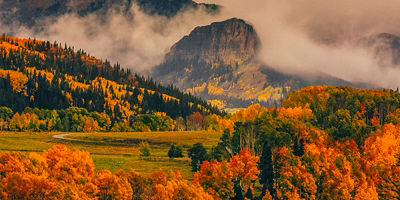
When Angela Lee first started climbing in Colorado’s San Luis Valley, she experienced what many climbers dream of: perfect solitude. Crags all to herself. No crowds anywhere.
“It was basically just me and my partner Wes at every crag we went to,” she recalls. But for Lee—a community organizer, farmer, licensed attorney, and sponsored climbing athlete quickly gaining renown in the West—this wasn’t a dream come true. It was a problem.
“The San Luis Valley is a really small, rural community, so the climbing community was really fragmented,” she says. “There was no hub.”
That meant no centralized group to help build trails, maintain crags, or update climbing hardware. It meant no consensus on how the area’s public lands—a critical resource that all climbers depend on—should be managed and cared for. It also meant there was no sense of togetherness or camaraderie—the very things that made Lee fall in love with climbing in the first place.
For Lee, it felt like wasted potential. After all, the San Luis Valley is home to cliffs of high-quality volcanic tuff, a type of welded ash that lends itself to pockets and crimps. There are sport lines, plentiful bouldering, and striking cracks. She knew it was too good not to share.
So, in 2019 Lee and her partner Wes started reaching out to local climbers as well as prominent climbers from earlier generations who had made the area’s first ascents. Those connections provided a deeper sense of what the community needed. Then, the duo co-founded the San Luis Valley Climber’s Alliance, the area’s first climbing stewardship nonprofit. The organization helped unite the Valley’s climbing community and give it a voice, plus it provided a contact point for local climbers looking to volunteer or help out.And for Lee, it was also a way to give back to the sport that saved her life.
Rock Bottom
The daughter of Korean parents, Lee spent most of her childhood growing up in Uijeongbu, just north of Seoul. When she was in the sixth grade, her parents moved the family to California, hoping to give Lee and her brother access to better education.
“They sacrificed so much to get me and my brother here to the States,” she says.
Growing up, Lee says she didn’t always grasp the depths of that sacrifice. Instead, she tried hard to fit in at her American school. She refused to eat Korean foods like kimchi and did everything she could to separate herself from her roots.
“I had a lot of identity crises,” she says. “Because growing up, you always just want to assimilate and be as white as you can so you can pass through.”
When she graduated college, Lee jumped straight into law school, hustling hard to fulfill others’ expectations. Partway through, suffering from burnout and spiraling deep into depression, she realized she wasn’t sure who she was deep down, or what she wanted from life. She found herself on the verge of a breaking point. She didn’t know what to do.
So, on a whim and desperate for change, she moved to Albuquerque, New Mexico, to finish her law degree. That’s where she discovered climbing.
“When I deep-dove into climbing, it helped me crawl out of my dark place,” she says. For one thing, the climbing community taught her that there were avenues to success byond a fancy job or a hefty salary—there were other ways to live a good life. For another, climbing brought her to remote landscapes and into contact with soaring cliffs and twisting rock formations. It brought her close to nature in a way she’d never been able to experience before. She fell in love with the land. For the first time, she started to feel connected to something greater than herself. It was exactly what she needed.
“Now, I feel this need,” Lee says, “like I need to give back to this thing because it’s given me so much.”






















